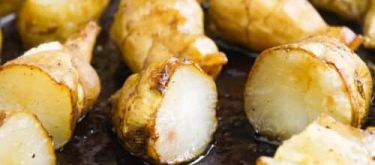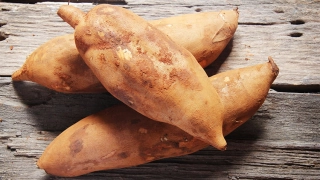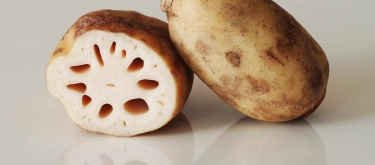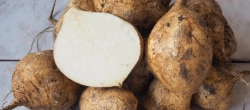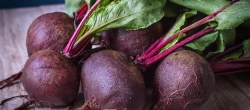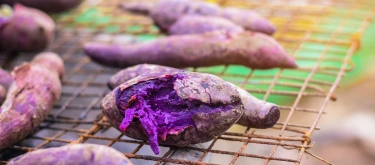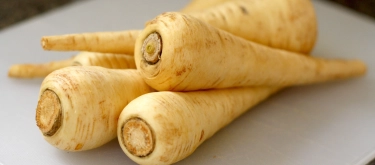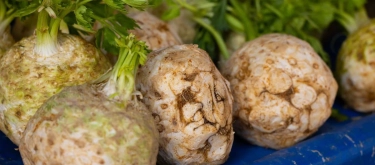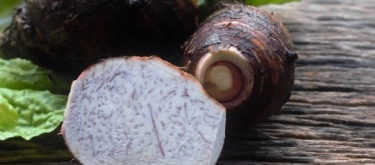Karkalla: Taste Profile, Aroma, Benefits and Health Risks
Karkalla (Carpobrotus rossii), also known as pigface, is a succulent groundcover native to coastal Australia. With thick, juicy leaves and bright pink-purple flowers, it has long been valued by Indigenous Australians for both its edible and medicinal properties. The plant thrives in sandy soils and salty environments, making it a resilient bushfood source along shorelines.
Karkalla is considered safe for general consumption and is often used fresh. There are no known allergenic effects or contraindications when consumed in reasonable culinary amounts.
What does Karkalla taste like?
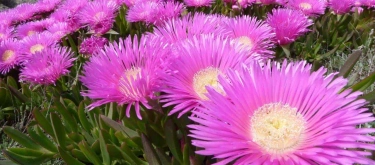
Complete Sensory Description:
The taste of karkalla is crisp and mildly salty, with fresh vegetal notes reminiscent of purslane, cucumber, and green beans. Some palates detect a faint sweetness followed by a mineral, oceanic finish. The aroma is clean and green, similar to fresh succulents. The texture is firm yet juicy — like a cross between sea asparagus and aloe. Visually, karkalla leaves are thick, triangular, and vibrant green with a glossy surface and occasional reddish tint at the tips.
In-depth Flavor Analysis:
The salty character of karkalla comes from its halophytic (salt-tolerant) nature, which results in sodium and potassium salt accumulation in the leaf tissues. Organic acids such as malic acid contribute mild tartness, while mucilage in the plant tissues enhances mouthfeel. Chlorophyll and carotenoids dominate its flavor profile when eaten raw, giving it a grassy yet balanced taste. When cooked, its subtle sweetness is enhanced, and its texture softens into a tender bite.
Flavour Variations Depending on Preparation and Maturity:
-
Young leaves: Milder in saltiness, more tender and sweet — best for raw salads.
-
Mature leaves: Thicker and saltier, suitable for pickling or light sautéing.
-
Raw: Crisp, juicy, and refreshing with a green flavor.
-
Blanched or steamed: Softer, with mellow salt and a more spinach-like texture.
-
Pickled: Intensifies the briny profile and adds acidity.
Varieties and Culinary Applications:
While Carpobrotus rossii is the most referenced, related species like Carpobrotus glaucescens are also used. Karkalla is popular in modern Australian cuisine: raw in coastal foraged salads, lightly grilled as a side, or pickled as a condiment. Its ability to balance rich or fatty dishes makes it ideal alongside seafood, pork belly, or creamy sauces. It’s also infused into broths, vinegars, or oils.
Selection and Storage:
Harvest fresh, plump leaves that show no signs of drying or yellowing. Store unwashed karkalla in the fridge wrapped in a damp paper towel for up to 5 days. Use quickly for best texture.
Nutritional Insights:
Karkalla is a hydrating food, rich in electrolytes like sodium and potassium, and contains vitamin C and dietary fiber. It offers cooling, anti-inflammatory properties and supports hydration, especially in hot or arid climates. Traditional uses include soothing insect bites and treating skin irritations.
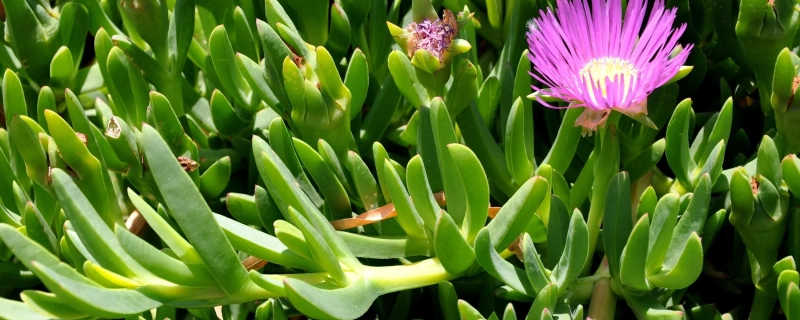
Culinary Insights & Presentation Tips:
Karkalla is both functional and visually appealing. Its glossy, angular leaves serve as an edible garnish that enhances plating with a natural, coastal elegance.
-
Use as a natural garnish that also enhances salinity.
-
Blanch briefly to soften texture before adding to warm dishes.
-
Pickled karkalla complements charcuterie and native cheeses.
-
Pairs well with lemon myrtle, finger lime, and wattleseed in native herb blends.
-
Its geometric form and vibrant green color provide structure and contrast on seafood and creamy plates.
Interesting and Curious Facts:
-
The name "karkalla" originates from Indigenous Australian languages.
-
It has been used traditionally not only as food, but also to treat burns, stings, and digestive complaints.
-
Karkalla’s flowers and fruit are also edible and mildly sweet, though less commonly used.
Harm and Dietary Considerations:
There are no significant harmful effects when karkalla is consumed as food. Its high water content and electrolytes make it beneficial, especially in summer. Unwashed leaves from roadside or polluted areas should be avoided.
Religious Dietary Considerations:
Karkalla is fully plant-based and acceptable in vegan, vegetarian, Halal, and Kosher diets.
Phytochemical Composition & Functional Properties:
Karkalla contains mucilaginous polysaccharides, flavonoids, and organic acids with antioxidant and anti-inflammatory properties. It is rich in moisture-retaining compounds beneficial for skin and mucosa. These constituents support traditional uses for topical relief and digestive aid.
Interactions with Other Flavors (Flavor Pairing Science):
Its salty, green profile makes karkalla ideal alongside shellfish, miso, citrus zest, and sesame. It brings brightness to heavy dishes and umami depth when grilled. Combines well with native ingredients like samphire, sea parsley, or bush tomato.
Cultural & Regional Uses Around the World:
Beyond Australia, similar Carpobrotus species are used along the Mediterranean and South African coasts. In Australia, it has a strong presence in Indigenous coastal diets and is part of foraging-based cuisine revival.
Final Thoughts & Sensory Journey:
Karkalla is a shining example of nature’s ability to fuse resilience and refreshment. With its clean salinity, succulent texture, and botanical heritage, it bridges bushfood traditions and contemporary cuisine in a bite that is both grounding and elevating.
Resources:
-
Australian Native Food Harvest by Julie Weatherhead (2015). ISBN: 9780646930093
-
Bushfood Plants of South-East Australia by Keith and Irene Smith (2000). ISBN: 9780731811076
-
Plants of Coastal Dunes by John Pearn (1996). ISBN: 9780646305815
-
Handbook of Functional Herbs by James E. Simon (2006). ISBN: 9781560229965
